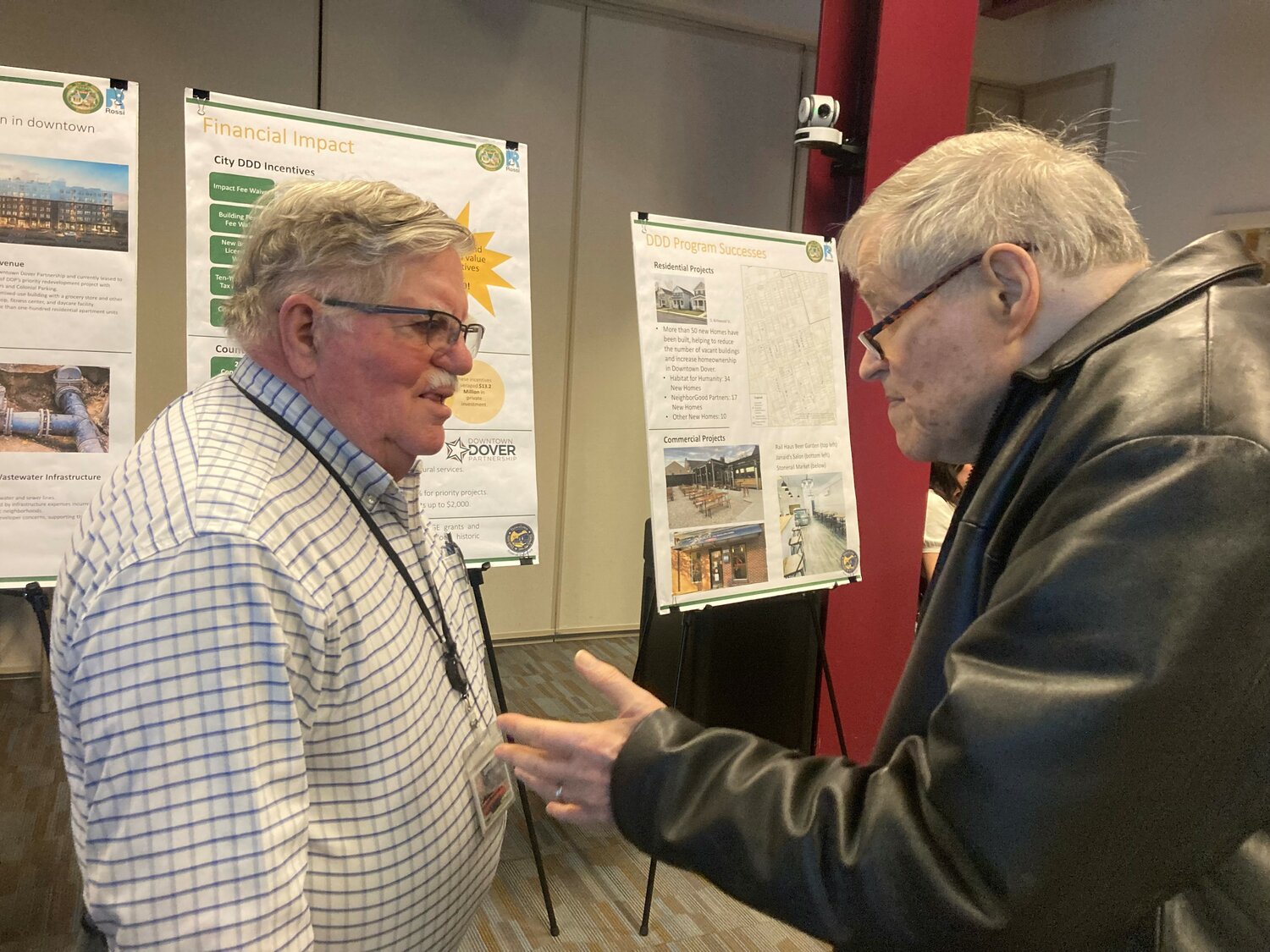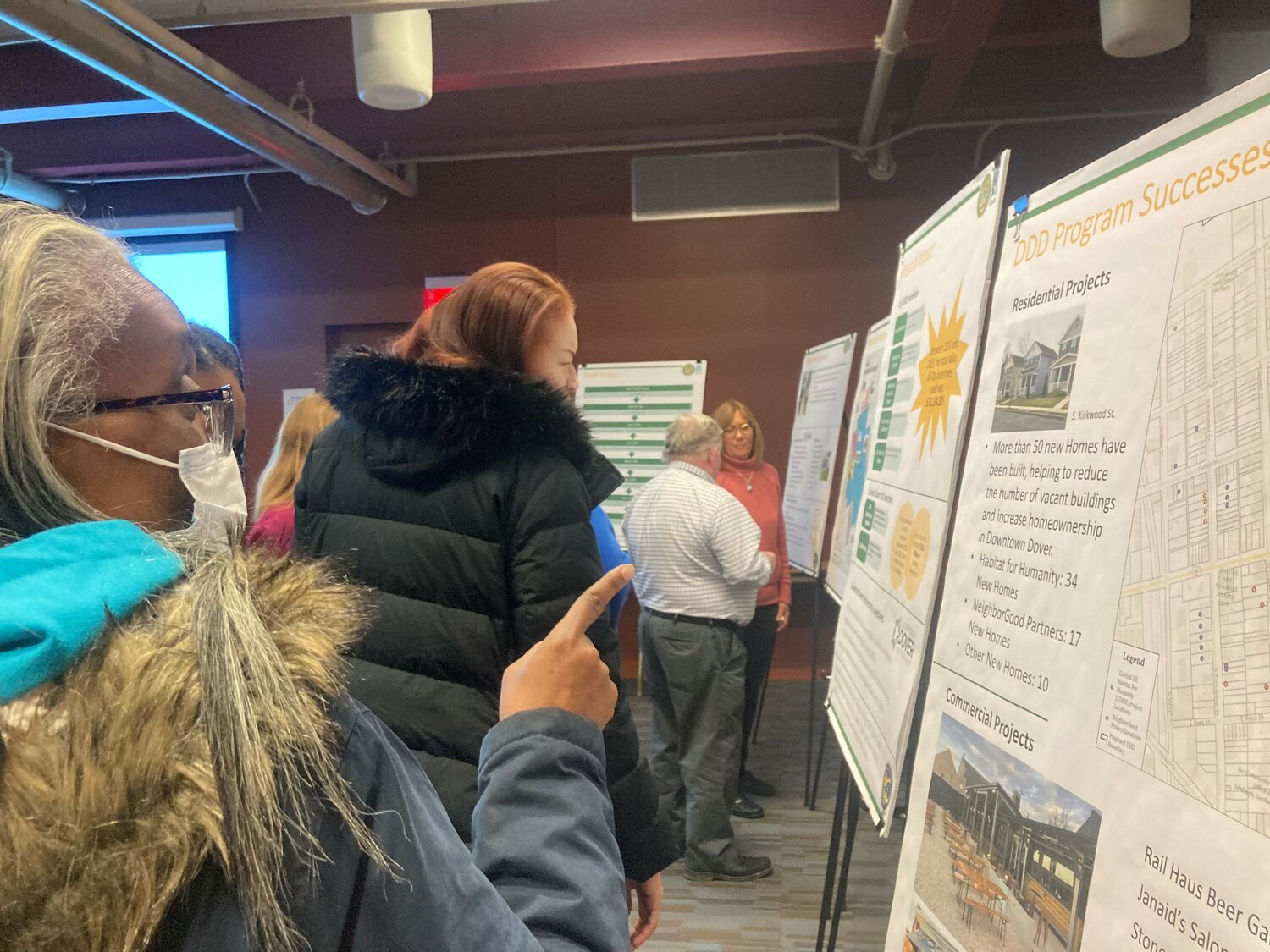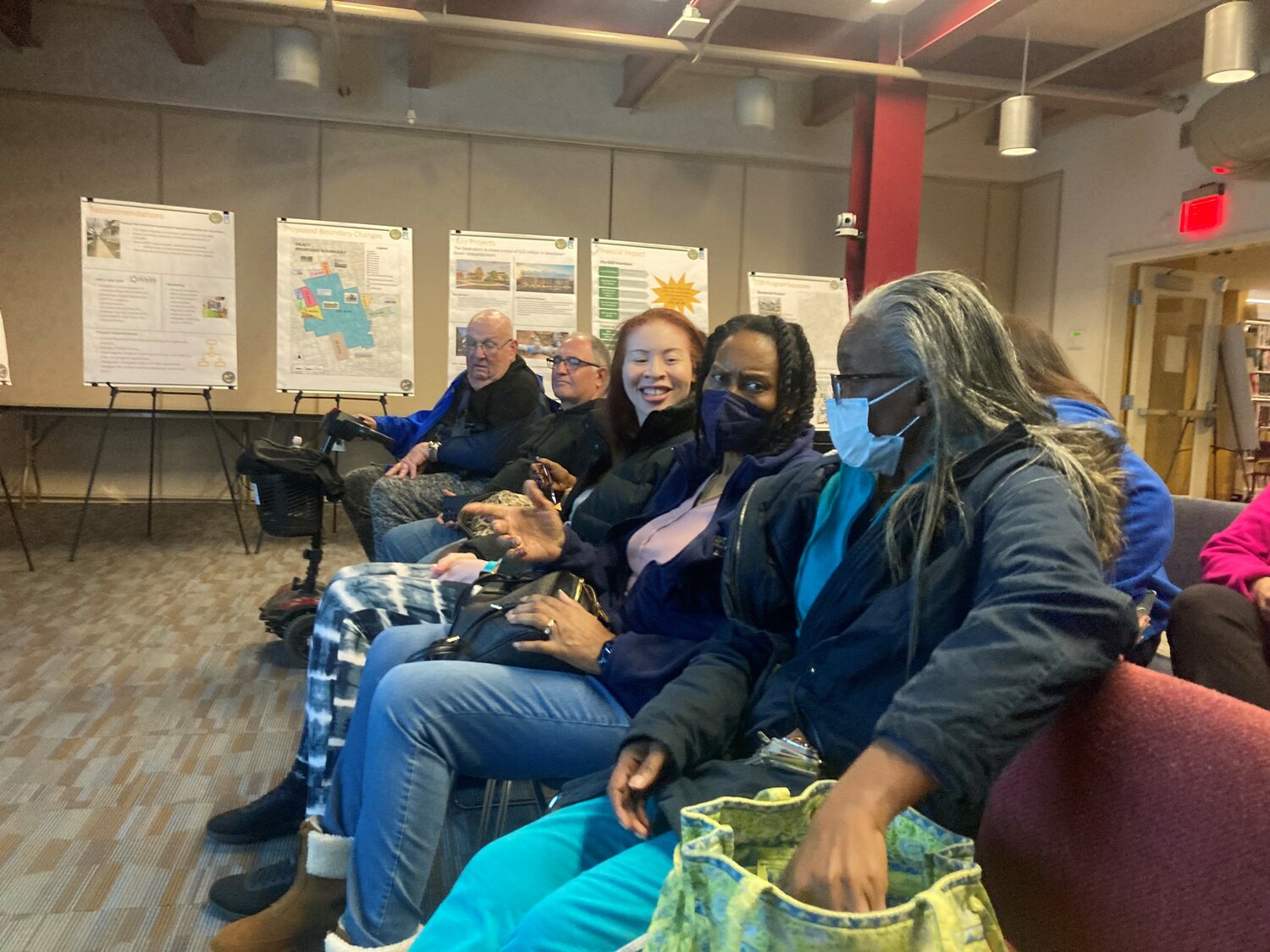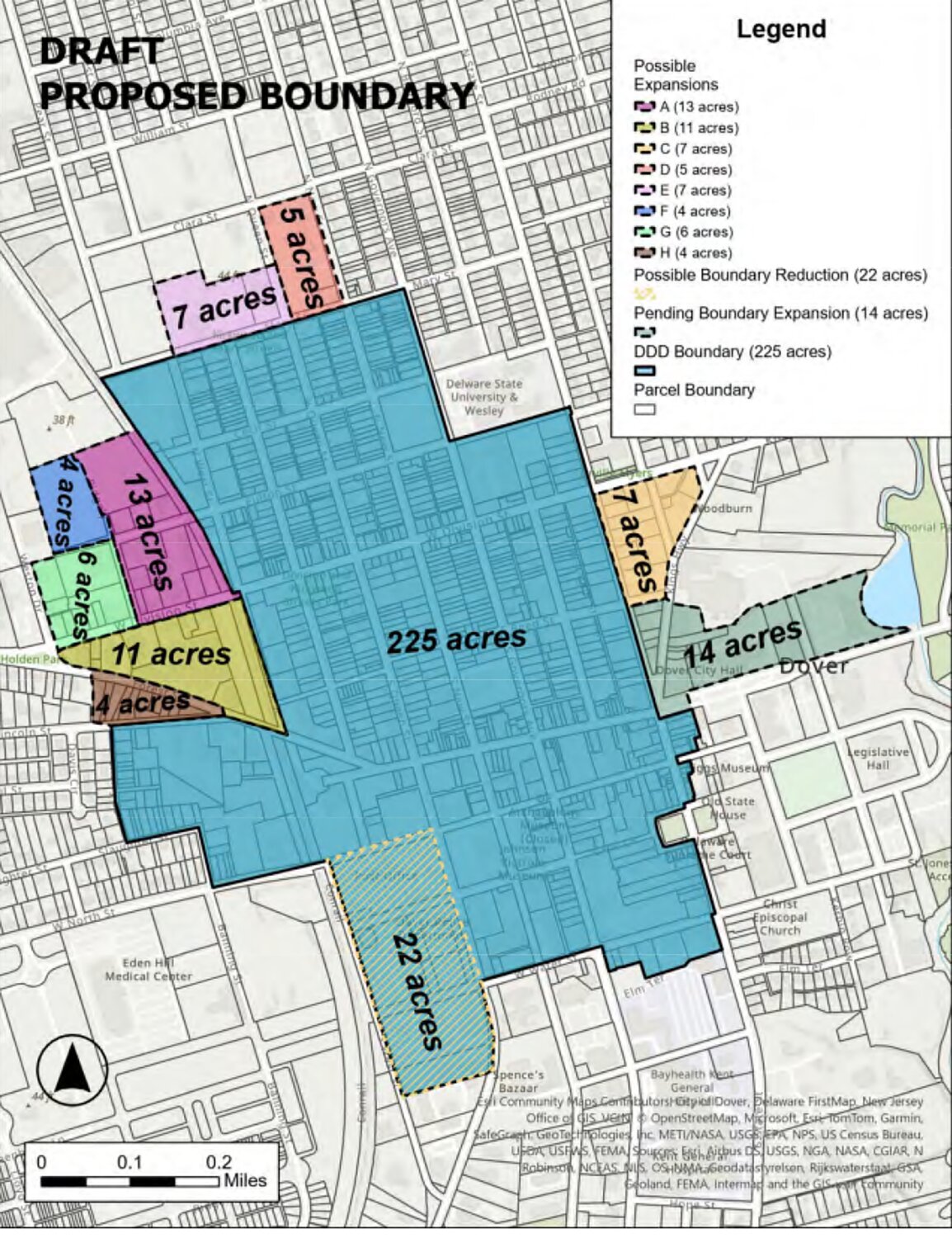Plan seeks to extend Dover’s Downtown Development District boundaries
DOVER — The city is hoping to get a five-year renewal through the state next year on its designation as a Downtown Development District.
It is also looking to expand its Downtown …

You must be a member to read this story.
Join our family of readers for as little as $5 per month and support local, unbiased journalism.
Already a member? Log in to continue. Otherwise, follow the link below to join.
Please log in to continueNeed an account?
|
Plan seeks to extend Dover’s Downtown Development District boundaries
• City: Waives impact fees, building permit fees, new business license fees; offers a 10-year property tax abatement, a transfer tax rebate, and a historic tax credit.
• Downtown Dover Partnership: Architectural, façade, critical improvement, and business retention/expansion grants.
• County & State: 20% construction rebate and a $10,000 matching program.
Results
• Total state rebates since program started in 2015: $1.6 million
• 2018-2023 total value of city incentives used: $73,134.20
• Private investment: $13.2 million
 By Mike Finney
By Mike FinneyDOVER — The city is hoping to get a five-year renewal through the state next year on its designation as a Downtown Development District.
It is also looking to expand the district by 50 acres — moves that are being made in harmony with the “Capital City 2030: Transforming Downtown Dover” master plan being coordinated by the Downtown Dover Partnership and the city of Dover.
Anne Marie Townshend, senior project manager for Rossi Group, made a pair of presentations to the public at the Dover Public Library on Tuesday to discuss what was taking place behind the scenes.
“This is a game changer,” said Ms. Townshend, a former director of planning and community development for Dover. “The importance of this Downtown Development District program can’t be understated.
“When we applied to the state in 2014 for the Downtown Development District, we were limited to 225 acres — and that is what our district is now. However, the state got that changed and you can now go up to 275 acres.”
Much of the added territory to the Downtown Development District is on the west side of the city, which is poised to serve as a key entry point into Dover in the future.
“We had some strategic conversations about where you would get the best value and where would it make best biggest impact,” Ms. Townshend said.
The proposed new district would be expanded to include:
• A southwest Dover proposed removal of government-owned properties (22 acres)
• An eastern addition approved Feb. 1 that extends east from State Street along Loockerman Street to the St. Jones River (14 acres)
• Another eastern addition that is bounded by State Street, Kings Higway. and Division Street. (7 acres)
• Northern additions: Delaware State University and Army Reserve property — possible redevelopment (12 acres)
• Western additions: Primarily industrial, western gateway to downtown (38 acres).
Ms. Townshend said Dover is better positioned for growth than it was 10 years ago, when it first became a Downtown Development District, and added any money that can be used to spur enterprise and development is a plus.
“We are in the process of applying for a five-year renewal,” she said of the program.
“I think a lot of the thought at the time that the Downtown Development District program started was that we were going to see major commercial investments and we were going to see a lot of the things that we are going to see in the next five years.
“That’s not really how it played out in Dover or in the other communities in talking to Smyrna and Milford. They’re seeing pretty much similar things to what we’re seeing in Dover, where the big investment has been in the residential side of things, and there has been some investment also in commercial.
“There’s not been the large transformational commercial and mixed-use projects. But here in Dover we have 62 new homes built on vacant lots or lots where there were dilapidated or vacant homes.”
The large projects are now just around the corner now for Dover’s downtown master plan, thanks to the state’s recent $25 million investment in the city’s revitalization.
That will help pay for critical water and wastewater infrastructure, a six-story, multi-use building at 120 S. Governors Ave., a parking garage and mobility hub at 129 S. Governors Ave., as well as “The Old Post,” a four-story building that will house apartments and small shops on the bottom floor at the site of the old post office off Loockerman Street.
Dover’s Asua Ofosu was one of around 25 people who attended the first presentation Tuesday.
“I was looking forward to hearing and gathering information to make sure that whatever plans are being made are equitable to those who are low income and in the minority community,” Ms. Ofosu said. “I just wanted to make sure that there’s affordable housing and jobs in areas that people can live.
“The expansion is good for growth and jobs, but if there are plans to push people out of their homes, that’s not good. Even if there’s an old neighborhood, there has to be the opportunity to give those people the chance to stay in their home without having to leave.”
Bridget Avant, of Dover, would like to see an informational session such as Tuesday’s take place in central Dover, which is largely made up of minorities.
“Take it to the neighborhood,” she said, “Because you could see the (racial) ratio that was here. I just heard about this meeting last Sunday from my pastor. We’re on the corner of Queen and Fulton (streets).
“I just looked at the map and I don’t think it’s going to be eligible (for the program). I was raised on Fulton Street right where the railroad track is, and they need help. It sounds like help is out there and (the meeting) was very informational.”
Plan answers hard questions
The 62 homes that have been constructed in downtown Dover during the current iteration of the Downtown Development District were built in large part by NCALL, which is now NeighborGood Partners, and Central Delaware Habitat for Humanity.
Ms. Townshend said the plan aims to be inclusive of people of all races and different types of incomes.
“One of the key things in that, one thing you always worry about when you have revitalization of an area that’s needed investment, is gentrification,” said Ms. Townshend. “Are you going to end up displacing people, families that can no longer afford to live in this reinvested area?
“The strategy that we’ve developed, really led by NCALL at the time — Restoring Central Dover — with funding from the Wells Fargo Foundation really corrected for that negative side effect of reinvestment.”
She said Dover’s downtown was an area that was 85% rental in occupied housing.
However, the number of people now enjoying home ownership downtown — at a variety of income levels — has moved in a positive direction.
“Then, there have been business successes as well when it comes to the number of rehabilitated storefronts along Loockerman Street and Governors Avenue, Bradford Street and one of my favorites, Rail Haus,” Ms. Townshend said. “As part of the program, the state will give a 20% rebate on the investment. There’s certain things that qualify and there’s a whole process you go through for that.”
Homeowners who reside in the Downtown Development District are also eligible to apply for assistance when it comes to refurbishment projects.
What happened to downtown?
Like most other cities, business in the downtown Dover corridor has been in decline ever since the entrance of shopping malls into the city, first with the Blue Hen Mall in the late 1960s and ’70s, followed by the Dover Mall in the early 1980s.
Ms. Townshend said it is not impossible to shift momentum back the other way. She believes another five years in the Downtown Development District plan would help greatly.
“The whole idea was to spur capital investment and stimulate job growth in areas that had been kind of neglected,” said Ms. Townshend. “I think we all know this is not a strictly local thing. But when the car came on board and the highway system was built, the town cleared out and everything went to the highway. So, there was a long period of disinvestment.
“What the state did is they developed through this legislative program (a plan) that would designate Downtown Development Districts and have a state investment to help to spur that private investment. The whole idea was to spur capital investment and stimulate job growth in areas that had been kind of neglected.”
Moving the effort forward
Dover hired The Rossi Group, a planning and engineering consulting firm, to help the city navigate the process of reapplying to be a Downtown Development District participant for five more years.
Rossi will provide an updated draft of the Downtown Development District application package for the city to review April 2.
The Legislative, Finance and Administration Committee will meet at Dover’s Council of the Whole meeting at City Hall on April 9 to discuss the proposed changes.
If the committee moves the proposal forward, City Council will set a public hearing for April 22 regarding the proposed district boundary change.
That will be followed by a second public hearing May 13. If council members vote to accept the changes, the Downtown Development District package will be submitted to the state immediately following approval.
Members and subscribers make this story possible.
You can help support non-partisan, community journalism.
Other items that may interest you










